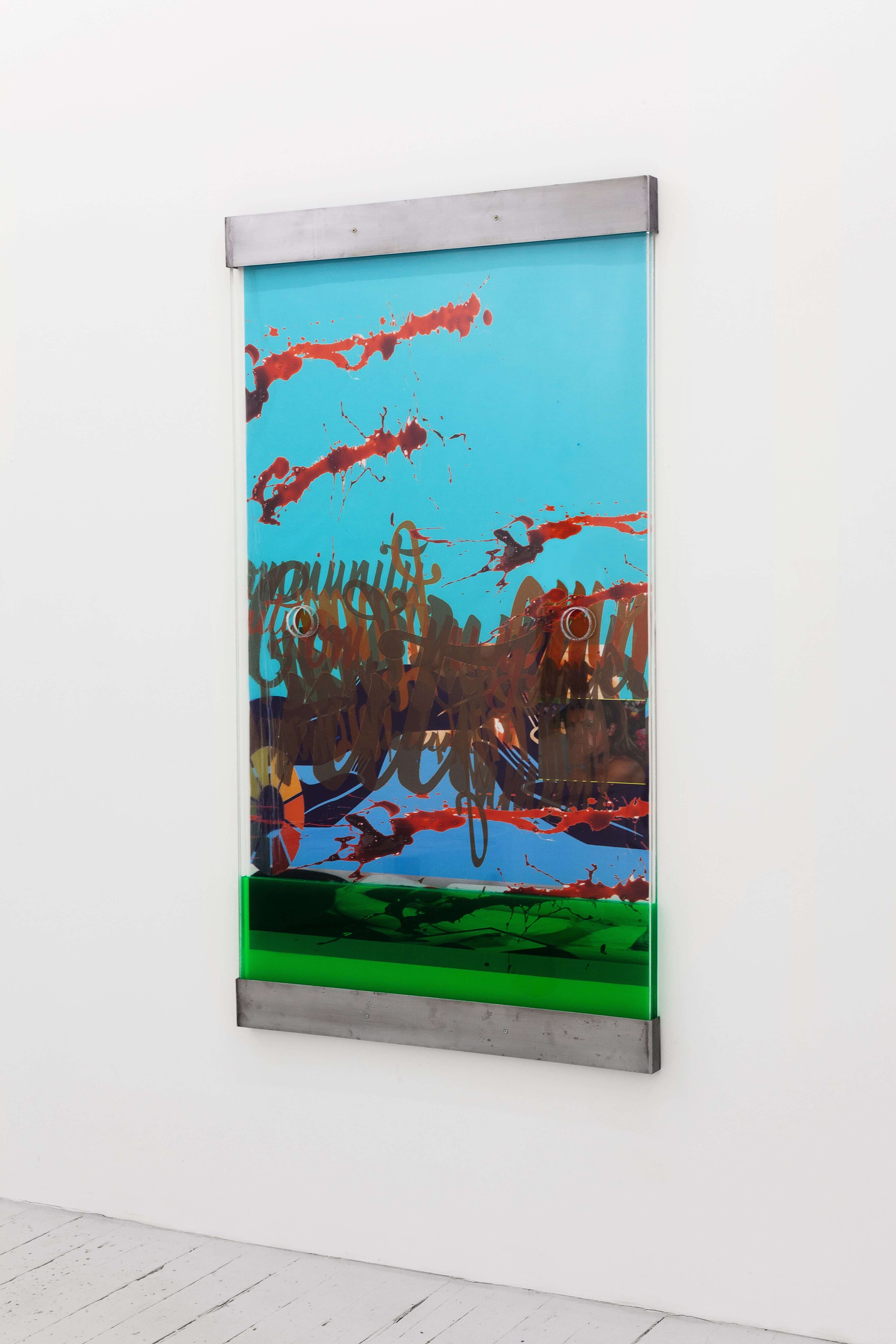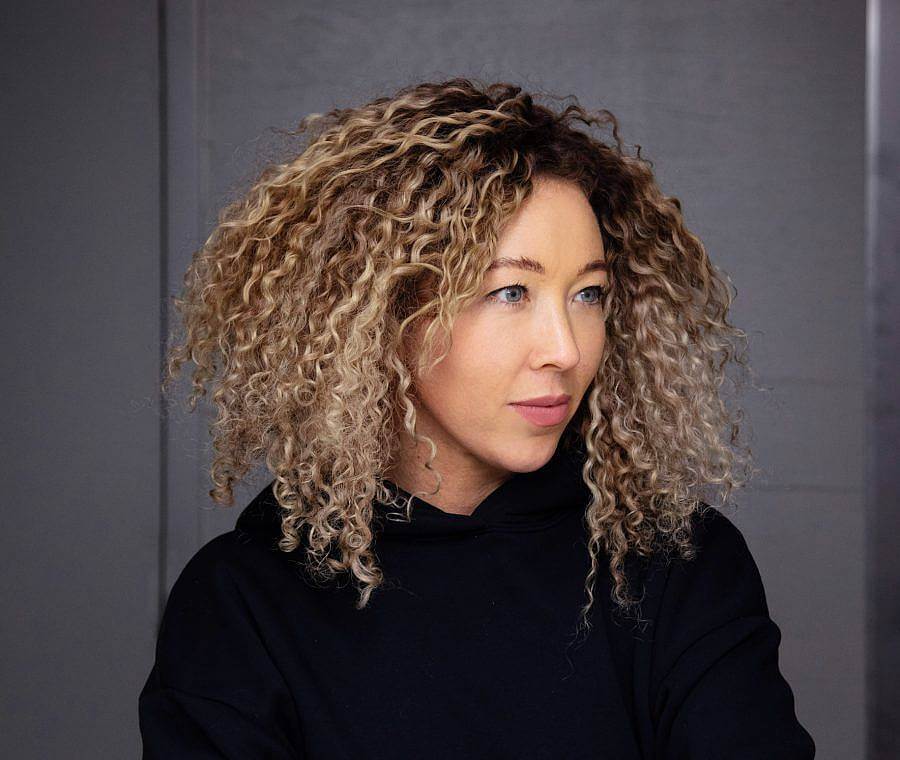Tell us a little bit about yourself and what you do.
I was born in Toronto, Ontario and spent my formative years helping my Dad after school in his chiropractic office. I watched him manipulate the internal structure of people’s bodies with his hands. The objects, aesthetic and furniture in his office left an impression on me and in retrospect, I think this experience sparked my interest in the boundary between the internal and external. Before entering high school, I attended a charismatic evangelical Christian private school from which I was eventually expelled; my time there made me think critically about the idea of god, inert and animate matter, magic and science.
I completed a BA in Studio Art and Gender Studies at the University of Waterloo. I moved to New Haven to study Sculpture at Yale School of Art where I also completed a graduate qualification in Women, Gender and Sexuality Studies. At the time I was very interested in Marcella- Althaus Reid’s writings on Queer Theology which lead me to pursue a graduate degree in Women, Gender and Sexuality Studies at Yale Divinity School before moving to New York. I lived and worked in the Bronx before relocating to Toronto where I have been working for the past four years.
My work combines domestic, industrial, and edible materials to highlight inherent connections between human and non-human matter. I adopt forms like tables, trays, containers, and other functional objects to make sculptures that act as flatbed terrains for the accumulation of aqueous and encrusted materials mixed beyond easy recognition. I overlay, coat, and embed a gamut of objects and liquids that shift and chemically alter over time to simulate aspects of digestion. I layer and combine materials to form chains of superimposed ingredients—including brand names such as Yankee Candle® Fragrance Spheres™, Froot Loops®, and Purina® Dog Chow®. I am interested in the intimacy between bodies and things consumed, evoking underlying links between ecology, consumption, and bodily functions.

What are some recent, upcoming or current projects you are working on?
My most recent show was, SoftFocus®, an installation in a storage locker presented by Bunker 2 in Toronto. I took cues from mobile retail structures and restaurant decor and made a series of sculptures where objects, images and snacks merge with their mechanisms of display or containment. My current show, Dental Dam, at the University of Waterloo Art Gallery in Waterloo, Ontario is an installation of new objects configured to consider the excess and blockage of the mouth: a porous site of communication, sexuality, and ingestion. The work draws upon the aesthetic language of health institutions such as the dentist office, hospital and the sexual health clinic.

Your materials range from Complements® Lavender Scent Dish Soap to Tropicana; what inspires these choices?
I use the materials that are part of the world I inhabit. I am interested in what an object or material does, where it’s found, what it looks like, its history, color, branding and what it signifies. I try to metabolize these qualities in the studio, chew them up so the thing I started with becomes unhinged, open and malleable. In this process materials and objects visually and physically interact with one another in ways I could never anticipate, which is a very interesting space for me in the process of making.
I use food as material in my work because of its relationship to the body and the process of digestion. The mouth is a site of porosity, sexuality, communication and ingestion of something outside. Donna Haraway describes the tension of a co-involved relationship between species and things in terms of eating: “[t]rying to make a living, critters eat critters but can only partially digest one another. Quite a lot of indigestion, not to mention excretion, is the natural result […]” Partial digestion points to an in-between state of being consumed while also remaining in-tact. This process of partial-digestion is an organizing principle that permeates all of my work.
I try to make a sculpture live, move, and change by using materials that have these inherent qualities. I am eternally fascinated by the metamorphosis, transmutation and volatility of material as these processes speak to the liveness of ecology, consumption, and bodily functions.
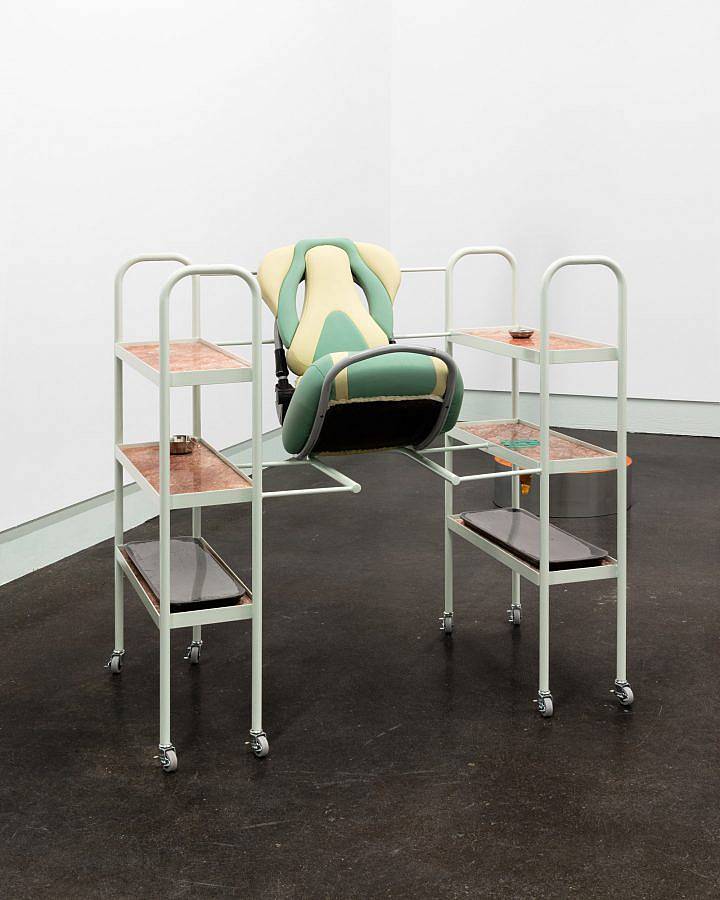
Your materials also include working with steel and granite; where did you learn these skills?
I’m very physical and involved with what I make. There are some things I need to make myself and other things I have fabricated. I have a friend in my studio building who fabricates a lot of my steel work because I don’t have access to a welding shop for example. Most of the time, however, I need to understand what the work is by working through it materially, so l learn the skills a piece requires as I move through its making. I enjoy the process of problem-solving and experimentation in the studio and find it is in this process that the work reveals its meaning to me.
What artists are you currently interested in?
Jack Whitten, Mike Kelley, Michael E. Smith, Anicka Yi, Laurie Kang, Nancy Lupo, Kevin Beasley, Olga Balema, Sondra Perry, Lu Yang, Aude Pariset.

What was the last exhibition you saw that stuck out to you?
Mike Kelley’s retrospective at PS1 and Mark Leckey Containers and Their Drivers at PS1.
What is the best piece of advice you’ve ever received?
The work should be the idea, rather than illustrate the idea.
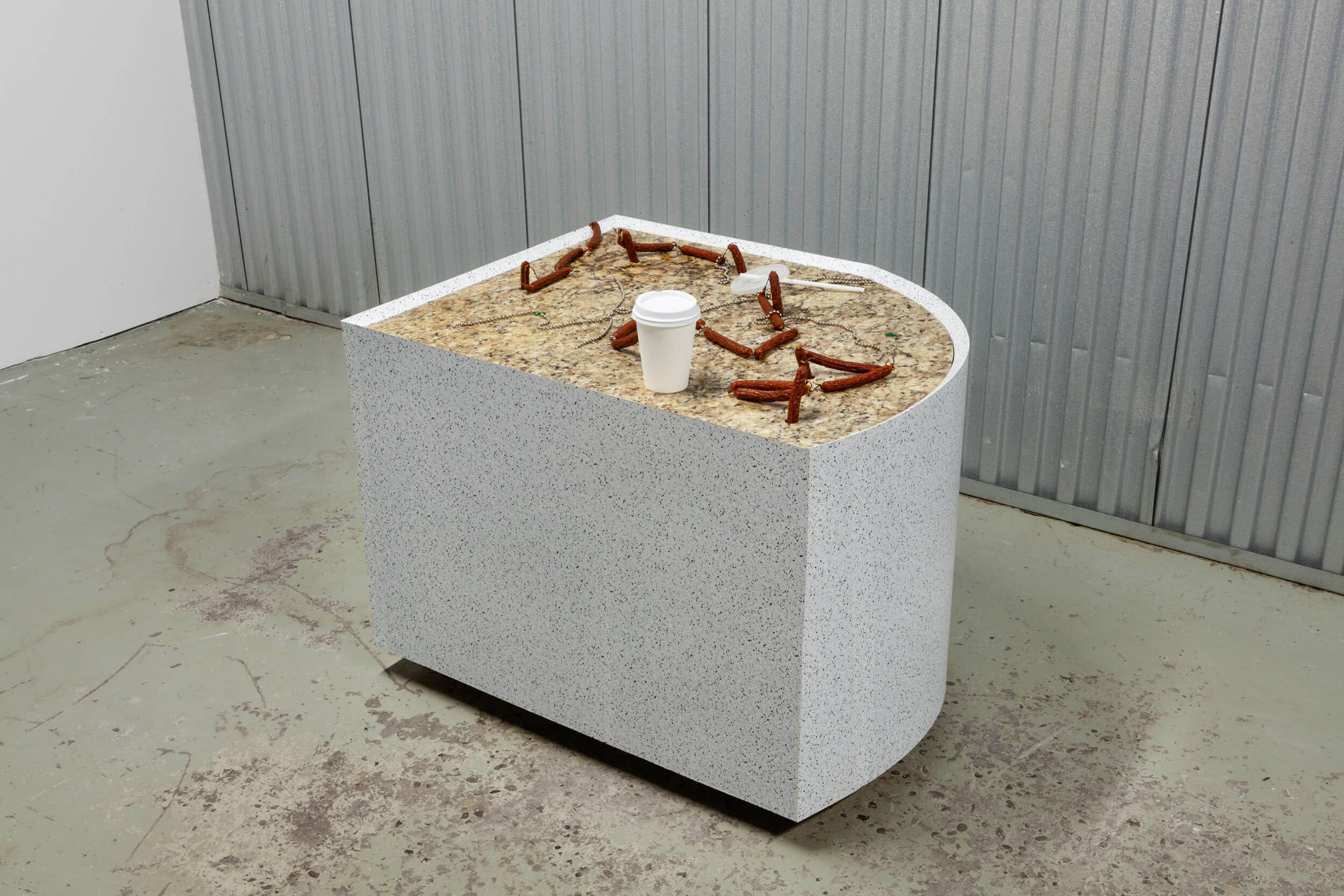
What is it like living and working in Toronto?
I’ve been living here for four years and I really appreciate the community I have in Toronto. I left New York abruptly due to problems with my work permit and haven’t been able to return, which is sad, but I have found Toronto to be a very generative place to work. My studio is big enough to allow me to make large work if I choose. I teach sculpture and video at a few different universities and I find it really invigorating. Teaching is important to me and feeds my work immensely and I’ve had the pleasure of working with so many fantastic students and interesting faculty.
Where do you see your practice going next? Any major changes happening in the studio?
I received support from the Canada Council for the Arts to work with scientist Andrew Pelling in his Augmented Biology Lab at the University of Ottawa to explore the boundaries of specific human and animal cells by growing them in sculptural scaffolds and environments and to examine objects’ interactions at a micro level. Inanimate objects, molecules and chemicals permeate our everyday life including the basic molecules that make up the lotions we apply on our skin, the plastic consumed from food containers and water bottles, the exhaust we inhale from passing vehicles and the objects that surround us. I am interested in exploring the creation of and change in these kinds of material-body-object-space assemblages.
The cell lines housed at the The Global Bioresource Center, ATTC, are categorized by age, gender, race and disease almost in the same way commodity objects are organized in a store, which feels really creepy, especially given the history of the HeLa cell line. The subject position of bodies and the context in which exposure, absorption, consumption and contamination occurs is shaped by uneven power relations, race, gender, and sexuality and I hope to tend t this material reality in my work and research in the lab.
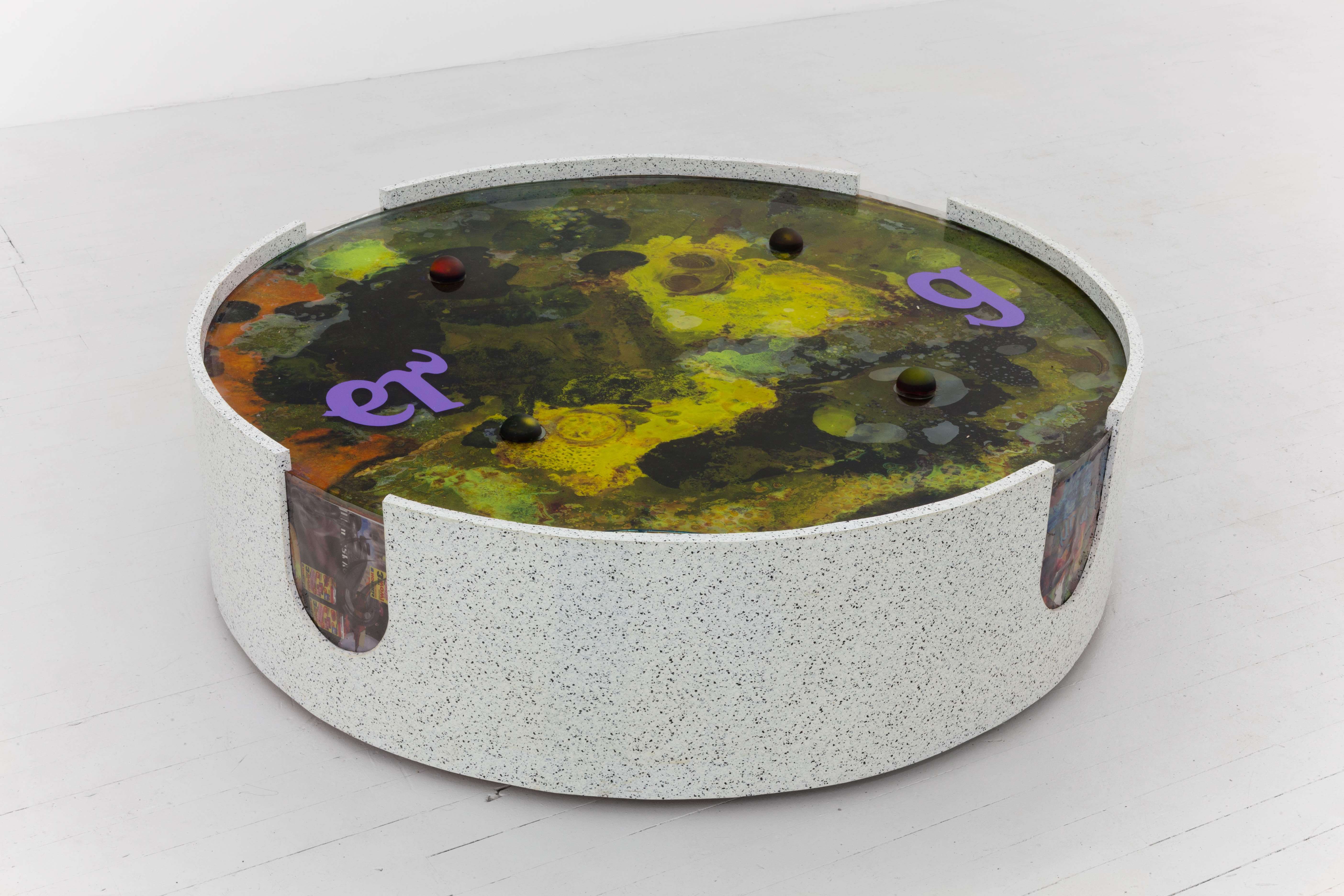
12″ x 42″ x 42″
Can you give any advice to emerging artists?
Take pleasure from your work and the process. Make things that you care about. Be conscious of your social location and how history and power shape the present. Don’t get caught up in the comparison game. Read as much as you can. Show up for your friends and partner. Take care of yourself.
